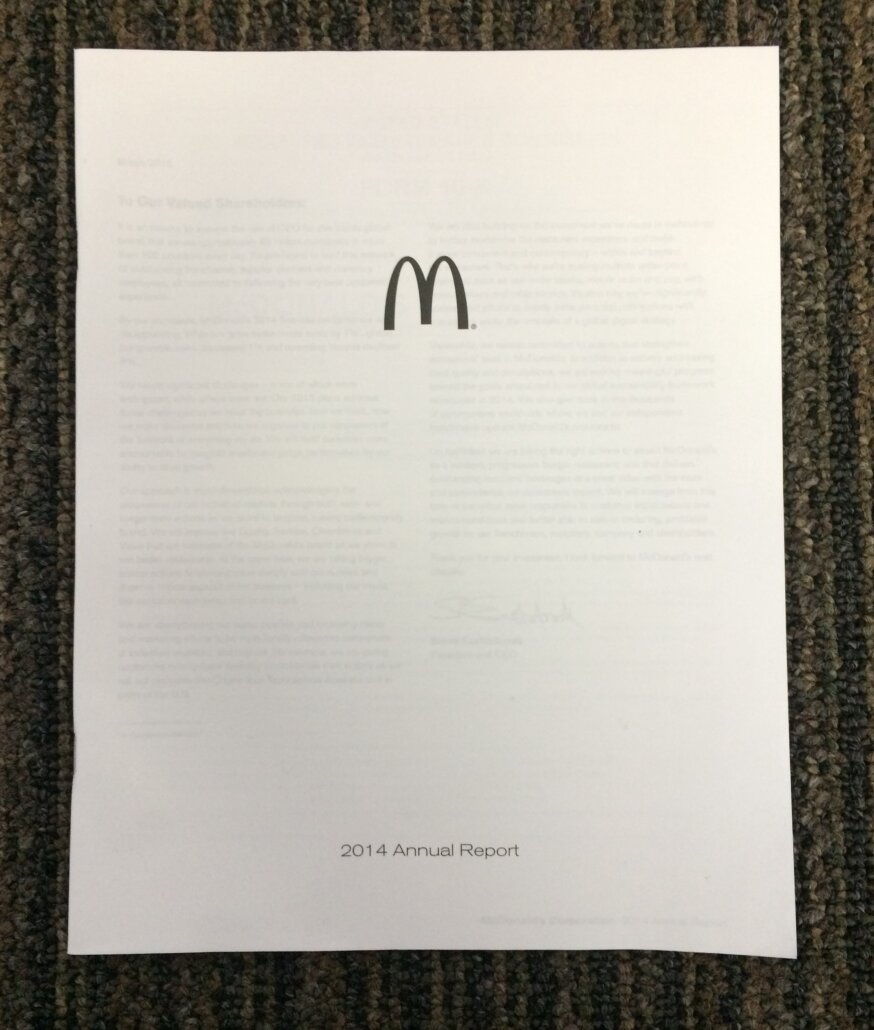In the world of Print, Color is Expensive. Even Just a Little Bit of Color is expensive. At least, it always has been. Black is cheap. Only blank white paper is cheaper.
So if you had something to say, and you needed to say it cheap, you printed with Black. On White.
Beautiful, Intense, High Contrast, Stark, Pitch… BLACK.
If you had just a little more budget to work with, you might add a spot color – at least in the world of Analog print. (Digital print hasn’t really embraced spot colors (yet?), but that’s another story.) Adding a second color only increases your cost by about 30%, compared to Full Color printing, which could easily double your cost – sometimes more.
So, Black became the workhorse of Print from day one. And most days, Black gets the message across just fine…
Except, when it doesn’t…
Except when communication FAILS to happen, because the message didn’t get across. Because the needed action wasn’t clear. The point wasn’t made and the project – the attempt at communications – failed.
Such as with the medical form or contract or document that has a thousand words – or 10 thousand… and the words you REALLY need to see, really need to read – the words that could save your life – look just like all of the other words on the page.
12 Point, Black, Helvetica
So, you’re stuck with Black, but it’s not like you don’t have tools to work with… ways of making the important information stand out… Italics, ALL CAPS, bold… Heck, you might even be able to mix it up with a smattering of fonts and character sizes…
And with some creativity, and design thinking, Black can be made to do remarkable things.
But MONOCHROME BLACK printing is still a HUGE LIMITATION.
Now, thanks to High-Speed Inkjet Printing, limiting your project to black-only, monochrome print has become unnecessary. With the new cost dynamics of inkjet printing, you can use Just a Little Bit of Color anywhere, all the time, at nearly the same cost as Black all by itself.
It’s not that inkjet inks aren’t expensive. Quite the opposite – they can cost 10 times as much as their traditional counterparts. And yes, Black Ink is still cheaper than Color Ink. But unlike most other print processes, the cost of ink is the ONLY difference in cost. With inkjet, there are no expensive plates (1 for Black, 4 for full color) and no click charges.
A Click Charge is industry jargon for a service contract that covers the cost of ink and other consumables in a single per-page charge. It’s a nice model for CFO’s, estimators and planners that can easily calculate the cost of a job. But in real life a click charge means that one little spot of color on a page costs the same as if you’d printed bold splashes of color across the entire thing.
So for most of the history of Print, there was no connection between the amount of ink used and the cost of the job. The An estimator needed to answer only one ink question before pricing a job in these click-based systems: IS IT COLOR or BLACK?
And those were essentially your choices: Color & Expensive or Black & Cheap
Today, High-Speed Inkjet printing provides a completely different way to think about Color. It allows you to ELIMINATE this artificial this constraint of technology, and create dramatically more effective communications pieces than if you were limited to Black.
So while the obvious way of looking at this is: More Ink = More Cost, the inverse is also exquisitely true: Less Ink = Less Cost. Regardless of Color!
In the world of High-Speed Inkjet Printing, the decision around what color that ink ought to be, moves from Finance back to Design. Exactly as it should!
So, what would You do with Just a Little Bit of Color ?

